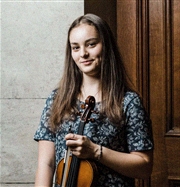Tutor HuntResources Music History Resources
All About Opera
DNA of an opera
Date : 23/08/2020
Author Information

Uploaded by : Annabel
Uploaded on : 23/08/2020
Subject : Music History
1. What is an overture? This happens at the very beginning of the opera and is played by the orchestra, without singers. It sets the scene in terms of musical style and atmosphere. Sometimes the overture takes melodic ideas from the rest of the opera and introduces them to the audience. Mozart chooses not to do that in Le Nozze Di Figaro. 2. What is an aria? A piece of music in which a character dwells on or explores an emotional state or situation. These pieces showcase the singers (accompanied by the orchestra) and are not necessarily concerned with moving the plot along. 3. What is recitative? These are the sections that serve to move the plot on. They allow flexibility of pace and expression and imitate speech rhythms. Usually there is minimal orchestral accompaniment, just keyboard and cello. 4. What is a duettino or terzetto? Essentially an aria for two or three characters who explore a situation which has arisen in the plot. Accompanied by orchestra. A useful way to portray how the characters interact, who has supremacy and to understand their relative status. Opera Buffa Opera Buffa is an Italian term meaning comic opera. It is mainly used for 18th century Italian comic opera. Opera buffa contrasts with Opera Seria (serious opera) in which the story has tragic elements. Opera Buffa can have moments of great profundity just as Opera Seria may have lightness and humour. Operas that pre-date Mozart (for instance by Handel and Gluck) tend to have serious (Classical Greek or Roman) settings and are made up of a strict series of musical forms. Recit Aria Recit Aria. Da Capo Aria
An aria with two sections A and a contrasting B section which is followed by the A section once again. The second A section is usually ornamented.
This resource was uploaded by: Annabel
